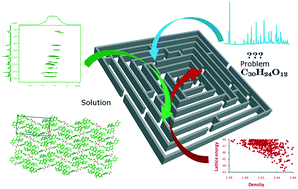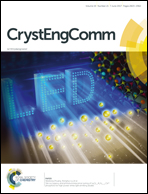Experimental tests for quality validation of computationally predicted crystal structures – a case of a conformationally flexible procyanidin A-2 dihydrate†
Abstract
Crystal structure prediction (CSP) of large, flexible, multi-component crystals is currently one of the most challenging computational tasks. In this work, we present a new approach to the CSP procedure, in which computationally generated crystal structures are evaluated not only on the basis of lattice energy, but also by the similarity of their theoretical NMR parameters and PXRD diffractograms with the experimental results. We employ procyanidin A-2 dihydrate as a model structure, and prove that even for such large and flexible systems with multiple possibilities of hydrogen bond formation it is possible to obtain a true crystal structure without single crystal diffraction experiments, on the condition that all three measures, i.e. lattice energy, NMR and PXRD similarity, are accounted for in an appropriate manner, so that they can guide us through a labyrinth of CSP-generated structures. The similarity of NMR parameters allows for unambiguous identification of the conformation of a molecule inside the crystal, whereas the PXRD data plainly indicates the true space group and, when combined with the crystal lattice energy, also the correct packing arrangement. Such an approach allows for faster elimination of incorrect structures, which in particular cases may be the only chance to obtain the true crystal structure within reasonable time and effort.



 Please wait while we load your content...
Please wait while we load your content...